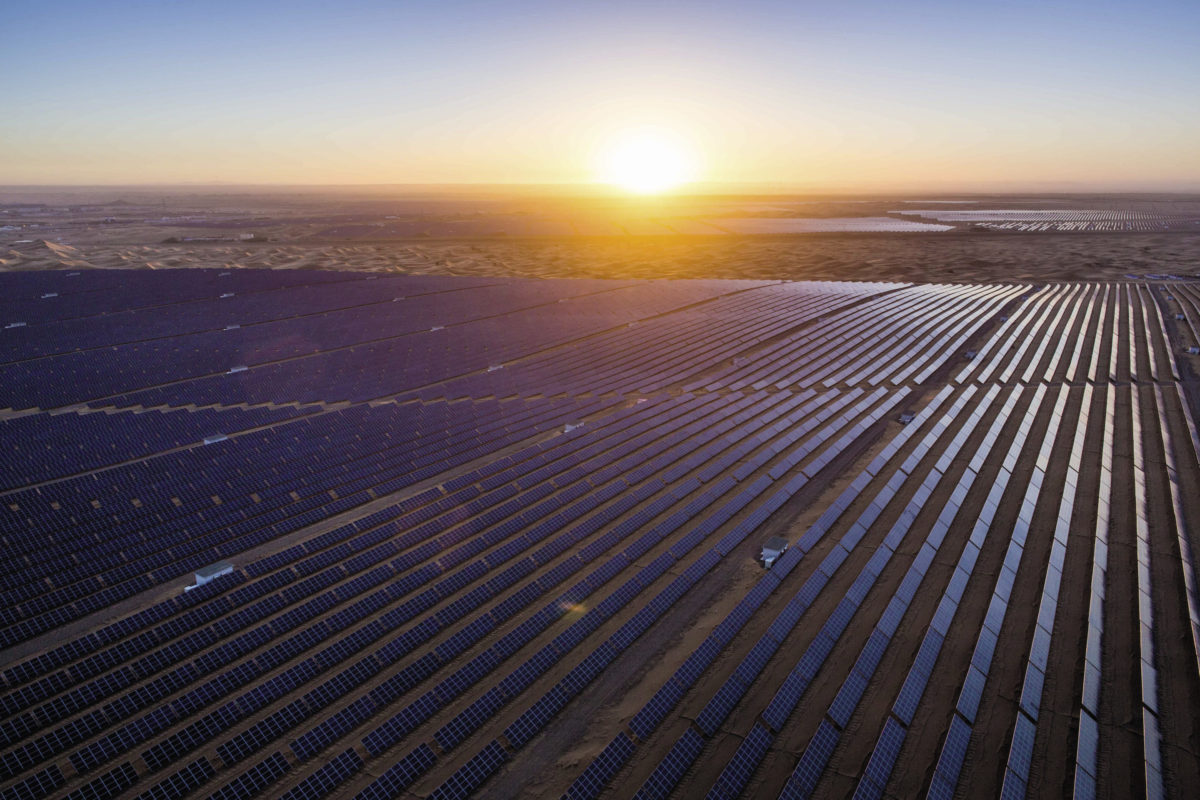Chinese polysilicon maker GCL-Poly will aim to sell off almost 2.8 GW of its remaining solar project capacity this year, to state-owned enterprizes, as it bids to pay down RMB16.5 billion ($2.52 billion) of near-term debts.
Some RMB4.54 billion ($679 million) of that debt pile was due to mature further down the line but has been owing since December 31 after GCL defaulted on the payment of $500 million of senior notes at the start of February, triggering a cross-default.
Setting out the reasons for such problematic accounts, head of the company Zhu Yufeng, in his comments in the 2020 annual report, said: “The global outbreak of the 2019 novel coronavirus epidemic, international political turmoil and frequent natural disasters have hit hard … global production and economic activities, on the scale of which the world has not witnessed in over a century.”
Project sales
Such exceptional times saw GCL's New Energy project development business sell off almost 2 GW of solar farms last year, raising RMB6.8 billion in cash and reducing its debts by RMB9.5 billion.
That project sell-off has continued apace since the turn of the year, with state-owned electric company China Three Gorges signing up to pay RMB1.62 billion ($247 million) for ten GCL solar project companies in a deal the vendor hopes to tie up by July, and with a further 34 solar farm subsidiaries the subject of negotiation between the two parties with that transaction planned to be completed this year. Those two sales could generate RMB2.3 billion for GCL and remove another RMB5.5 billion from its books.
With the business hoping to generate RMB1.94 billion in project sales to other third parties this year, GCL expects to have 114 solar projects left, with a total generation capacity of 2.8 GW, going into 2022.
It remains to be seen what effect the long-trailed transformation to an “asset-light” business will have on GCL New Energy, given last year's project sales drove a fall in revenue from the RMB6.05 billion banked in 2019, to RMB4.94 billion. That added up to a loss of RMB1.37 billion last year, after a RMB295 million ($45 million) profit in 2019.
The GCL annual report stressed no demand had been received regarding payment of the RMB4.54 billion it is in cross-default of and a planned reorganization which involves the issue of replacement senior notes for the defaulted investments has been approved by 91.85% of the note holders. GCL hopes to submit the paperwork for the debt restructure to the Court of Bermuda–where the company is registered for tax purposes–this month and expects to rubber-stamp the exercise “by June.”
For now, chairman and president Zhu said, the company “will accelerate the disposal of solar power plant assets and enhance co-operation with central enterprizes and state-owned-enterprizes strategic investors.”
The GCL chief added: “Last year, there were times we felt frustrated and confused, but we never retreated.”
Trade in GCL shares was suspended on Thursday as the company missed the March 31 deadline for publishing the annual accounts. Thursday's report stated GCL expects to resume trading in its stock tomorrow.
This content is protected by copyright and may not be reused. If you want to cooperate with us and would like to reuse some of our content, please contact: editors@pv-magazine.com.




By submitting this form you agree to pv magazine using your data for the purposes of publishing your comment.
Your personal data will only be disclosed or otherwise transmitted to third parties for the purposes of spam filtering or if this is necessary for technical maintenance of the website. Any other transfer to third parties will not take place unless this is justified on the basis of applicable data protection regulations or if pv magazine is legally obliged to do so.
You may revoke this consent at any time with effect for the future, in which case your personal data will be deleted immediately. Otherwise, your data will be deleted if pv magazine has processed your request or the purpose of data storage is fulfilled.
Further information on data privacy can be found in our Data Protection Policy.